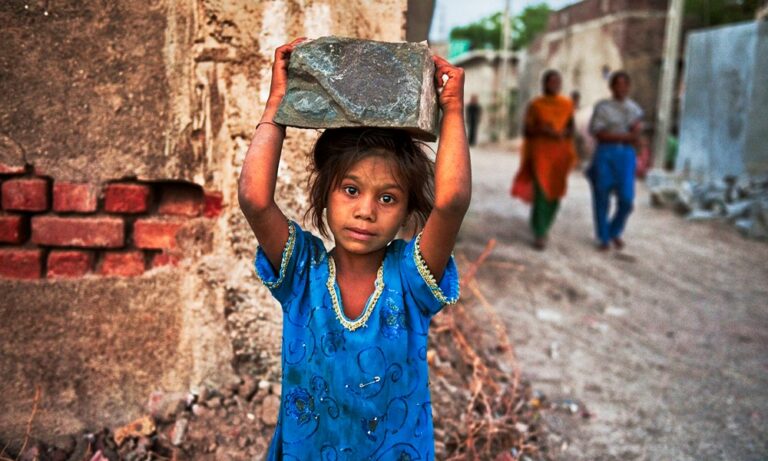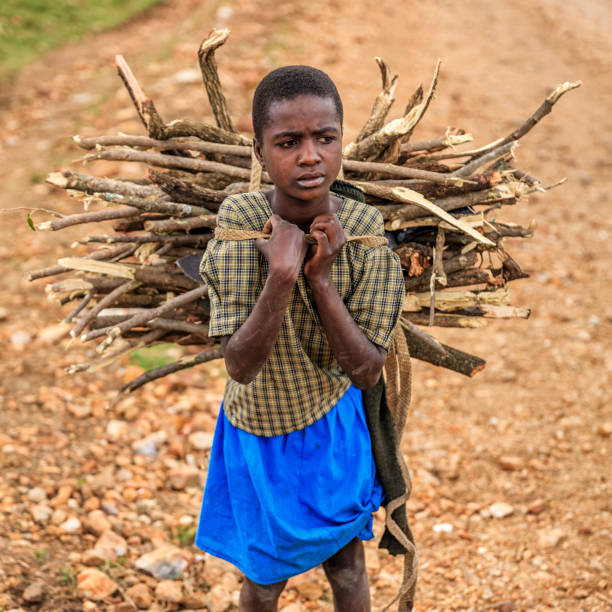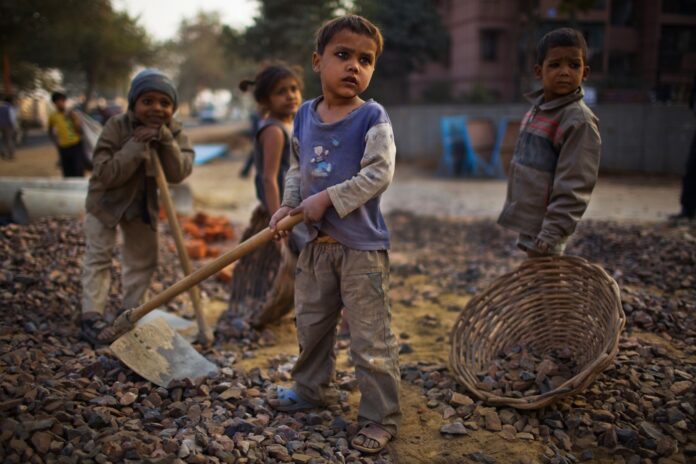By Marilia Platsa,
According to the definition by the International Labour Organisation (ILO) child labour is considered as “the work that deprives children of their childhood, their potentials and their dignity and that is harmful to physical and mental development”. It also has an impact on their schooling. Some striking examples are dropping out of school, the combination of both school and work or even the lack of attendance in the first place. In that sense, it eventuates that the adoption of simple tasks, on grounds which do not affect their health or development, is permitted. For instance, children are able to assist in household chores and in the family business and to earn an allowance in exchange of their labour during the holidays or after school hours.
We come across various forms of child labour around the globe. It constitutes a common phenomenon in the agricultural domain, predominantly in the cotton and coffee plantations. More precisely, concerning cotton-picking, children are considered to be the most suitable since they have small fingers, and therefore the detriment of the crop is avoided. It is also a widespread practice in the garment and textiles industry mainly in countries like India, Bangladesh and Cambodia. Taking into consideration the low-skills demand in this type of work, along with the fact that children are more obedient, which makes them seem easier to manipulate, they are considered as the ideal staff. One of the most harmful industries for children to work in, appears to be the tobacco industry; working long shifts -roughly 10 hours per day- in high temperatures, inhaling noxious chemicals and transferring burdensome loads could be perilous for their health and growth.
Moreover, children are exploited for the production of brick, that will then be used for construction projects. Furthermore, the sugarcane production is another sector that exploits children as young as 7 years old. In Africa, Asia and South America children are working in mines for the extraction of gold. These young workers are in severe danger of dying due to the explosions and of suffering from malaria, dysentery, meningitis or tuberculosis as a result of lack in clean water. Among the worst forms of child labor, ILO encompasses slavery, children enlistment in the army and their trafficking, prostitution and pornography along with other illegal activities such as the production and sale of drugs.

The roots of this rife phenomenon are mainly found in poverty which plagues these areas. Large families with insufficient income incite their children to earn a living and contribute to the family’s well-being. The “managers” also trick parents into believing that their children will have a decent wage and access to comfortable accommodation, some healthy meals along with facilities like schooling and training. In fact, not one promise is actualized. Another reason is that needy families cannot afford sending them to school. The cultural background is also to be blamed for the perpetuation of child labour. Α substantial majority of families claims that school is not time worthy since it will not offer children a job. In some cases, they are not even aware of children rights, thus approving the indecent work. In the countries that this phenomenon flourishes, the legislation is deficient in contrast to the countries with no rates of underage workers, because it is forbidden by law. Finally, the outbreak of COVID-19 might impact the rise of child labour in these regions because of the closure of schools and parents’ deaths.
Unfortunately, there are companies that still use child labour or have been accused of exploiting children in recent years. Nestlé is on this list. Despite having signed an agreement in 2001 committing to eradicate it from its industries located in Ghana and Ivory Coast, a lawsuit against the company brought to the surface new evidence, reaffirming the suspicions. In 2018, Amnesty International blamed Microsoft for using 7-year-old children to extract cobalt under harsh conditions in 12-hour shifts that will be used to produce its commodities. Apart from Microsoft, Amnesty International has also denounced Sony, Samsung and Apple for falling sort of safeguarding children’s rights by assuring that the minerals used are not extracted by them. However, there is no doubt that there are companies that have adopted policies against child labour.

In any case, tracking down child labour seems to be the main challenge for organizations and authorities that delays its elimination. The ILO estimates that Africa possesses the most terrifying numbers regarding child labour. More specifically, it has 72.1 million child workers and 31.5 million under life-threatening working conditions. On the other hand, in Europe and America a decrease is observed compared to previous decades thanks to the economic prosperity, the relatively low percentages of poverty and the political commitment of both to fight against this phenomenon. A positive auspice is that the majority of the countries belonging to these two continents have signed not only the UN Convention on the Rights of The Child (1989) but also the ILO’s Child Labour Conventions. Last but not least, the member states of the UN adopted in 2015 the “17 Global Goals” in which Target 8.7 of Goal No. 8 refers to the elimination of child labor by 2025. It is high time for the remaining countries as well as their companies to comply with the law and stop taking the children’s future away.
References
- Ethical Trading Initiative, Child Labour: A global scourge – but signs of progress, Available here
- International Labour Organisation, Regions and countries, Available here
- International Labour Organisation, What is child labour, Available here
- Schumacher E., Industries that rely on child labor, Available here
- Wakefield J., Apple, Samsung and Sony face child labour claims, Available here
- Whoriskey P. & Siegel R., Cocoa’s child laborers, Available here




